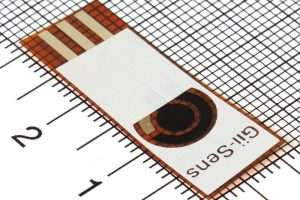NI has set out its stall for AI in the test industry. Following the announcement of LabView AI assistant at the end of last year (currently in beta testing), CTO of technology and innovation, Kevin Shultz spoke to Electronics Weekly about what will be the role of AI in test. He explained that the increasing complexity of products being tested ...
Research
The latest electronics research news from within the industry and universities from around the world.
What is the difference between MBE and MOCVD technologies?
Professor Richard Hogg and Dr Neil Gerrard compare molecular beam epitaxy and metal organic chemical vapour deposition film technologies. Molecular beam epitaxy (MBE) and metal organic chemical vapour deposition (MOCVD) are different types of epitaxial growth technologies used in III-V semiconductor synthesis. They both deposit atoms onto a substrate or semiconductor wafer, one atomic layer at a time. They produce ...
Leicester University, ispace work on lunar night survival technology
The University of Leicester is working with ispace, the Japanese space transportation specialist, to develop lunar night survival technology. They will collaborate on different approaches that could benefit future ispace lunar lander and rover missions. For example, they will be investigating, the use of radioisotope heater units to provide enough heat for a spacecraft through a lunar night, which has ...
ECTC: Triple wafer stacking for image sensors with embedded AI
French research lab CEA-Leti has reported stacking three 300mm wafers for improved CMOS image sensors, using hybrid wafer bonding and high-density through-silicon vias. The announcement was made in three papers at ECTC, the 2024 IEEE Electronic Components and Technology Conference in Colorado. 6μm hybrid bonding pad pitch, and TSVs are 1 x 10μm It is working towards a new generation ...
Imec develops die-to-wafer bond process with 2µm pad pitch
Imec has developed a Cu-to-Cu and SiCN-to-SiCN die-to-wafer bonding process resulting in a Cu bond pad pitch of only 2µm at <350nm die-to-wafer overlay error, achieving good electrical yield. Such fine-grained die-to-wafer interconnects pave the way to logic/memory-on-logic and memory-on-memory applications. On the longer term, die-to-wafer bonding will enable also die- and wafer-level optical interconnects – for which imec demonstrated ...
Creating the post powerful THz pulse ever measured
Researchers in Korea have created the strongest ever terahertz electromagetic field: 260MV/cm or 9×1013W/cm2 equivalent peak – so powerful that it is classed as ionising radiation. A 150TW Ti:sapphire laser was used to convert optical energy into THz radiation in a 75mm magnesium oxide doped lithium niobate crystal wafer – a material with strong optical non-linearity and high damage threshold. ...
High linearity RF filter tunes over 3.4 to 11.1GHz
A University of Pennsylvania team has turned to yttrium iron garnet to build a non-volatile microwave filter than can be tuned across 3.4 to 11.1GHz. “What’s special about YIG is that it propagates a magnetic spin wave,” said research engineer Troy Olsson. The team is researching filters for 6G communication in ‘frequency range 3’ – FR3, 7 to 24GHz. “At these ...
Sensing lactic acid with a graphene-like foam capacitor
University of Bath researchers have created a lactic acid sensor using double-layer capacitance created when a particular sensitive molecule is attached to a graphene-like porous electrode structure and immersed in a buffer solution. Creating an ac-based capacitive sensor, as opposed to dc voltage or current based sensor, sides-steps concentration and chemical consumption issues encountered in battery-like reactions. The carbon material, ...
Chip analyses human white blood cells
Imec has teamed up with Sarcura, an Austrian start-up, to build an white blood cell analyser-on-a-chip using integrated photonics. Resolution is sufficient to discriminate between lymphocytes and monocytes, “rivaling the performance of commercial cytometers”, said Imec scientific director Niels Verellen. It is a flow cytometer and is based on the scattering of a laser beam though a sample. The intensities ...
Maths converges on a better thermoelectric material
A designer p-type thermoelectric material from the University of Houston has shown >10% conversion efficiency at a temperature difference of 475K. It is a high-entropy ‘Zintl’ alloy of the form YbxCa1-xMgyZn2-ySb2, for which the team devised a way to calculate the exact proportions by aiming for band convergence. “It is normally difficult to get high performance from thermoelectric materials because ...
 Electronics Weekly Electronics Design & Components Tech News
Electronics Weekly Electronics Design & Components Tech News









